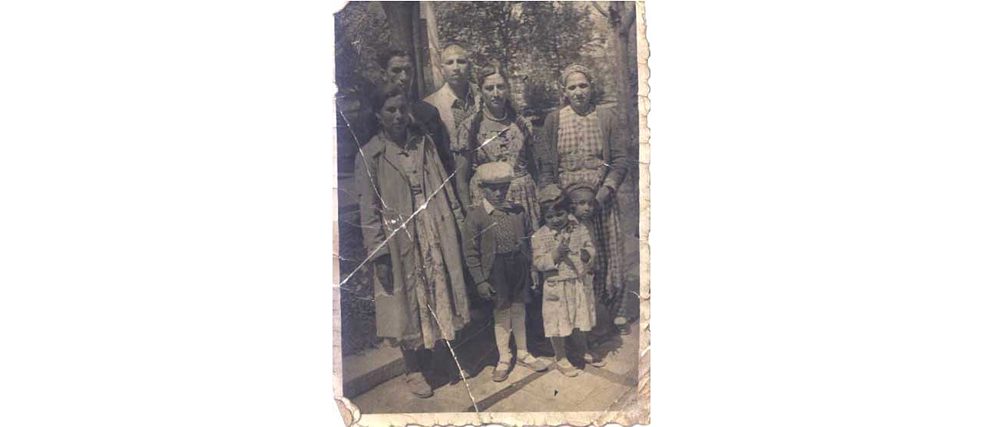Romani
Traces of language

Romanes is the language of the Roma. Most of their words come from India. But on the Roma's way to Europe, Romanes came into contact with many European languages - influenced them and was influenced by them. In Bulgaria, Greece and Sweden, for example.
By Prof. Dr. Hristo Kyuchukov
Romani is a new Indian language that was formed outside of India and was developed through the contacts with European languages. Its versatility can be demonstrated by the following example: A Romani song recorded in the nineteenth century among Serbian Roma is widespread among many Roma communities in the Balkans and is still known and sung during wedding parties and other family celebrations. It is also classified as a lullaby. The song tells the sad story of a Roma child sleeping in a swing under a plum tree. Its mother is dead. The baby cries and calls for its mother. No one is there to take care of it. A sheep passes by and gives the child milk, the wind blows and swings it, the rain bathes it. The father thanks God for his help.
Talaj phruna,
ande kuna,
o bakrja brej,
o čhavo rovel,
pe dajake ov phučel.
Buzni nakel čuči del les,
balval phurdel sovljarel les,
Devla, Devla o čhavo barvalo.
Bakrja nakhen čuči den les,
bryšind del najarel les.
Ah mo čhavo o barvalo!
Talaj phruna,
ande kuna,
si man čhavo Devlester,
o Devel les mange bičaldja.
Bakre nakhen čuči den les,
balval phurdel sovljarel les, Devla, Devla mo čhavo barvalo.
bryšind del najarel les,
ah mo čhavo o barvalo,
ah mo čhavo o barvalo!
The song is performed in different countries in different manners. It is popular mainly in Balkan countries. Among the Christian Roma in Bulgaria the song is performed more like a Bulgarian folk song, but the same song performed by Muslim Roma in Turkey already contains oriental motifs. The text remains almost the same but the melody of the song changes a bit. Something similar occurs in Romani lullabies in Hungary, where the same song is performed with different modifications by different groups of Roma.
Romani comprehends numerous dialects, each with a distinctive grammatical structure. It evolved outside of India during the migration of Roma from the Indian subcontinent to Europe. Historians agree that the largest waves of Indian migrants (nowadays Roma) left India at the end of the ninth and beginning of the tenth century A.D. At eleventh century they arrived to the Byzantine Empire. They came to Central and West Europe between the twelfth and thirteenth century, and brought with them different professions, which they have continued to practice to the present day – for instance, musicians, tin workers, circus artists, dancers.
Romani can be classified as belonging to the Indo-Aryan branch of Indo-European languages with influences from Armenian, Greek, Kurmanji and Romanian. It is historically related to Hindi. The Romani dialects in Europe, the Americas and Australia are divided into two main groups: those which came into contact with the Romanian language and that never had contact with it. In most Balkan countries, there is one town or village where you can find dialects or sub-dialects which have been in contact with Romanian and others that have not. In Central and Western Europe, some Romani dialects did not have contact with Romanian. The dialects that did come into contact with Romanian are termed Vlax dialects, and the others non-Vlax. In the Balkans there are speakers of both groups in all countries: they live in Bulgaria, Macedonia, Greece, Turkey, Serbia, Croatia, Kosovo, and Romania.
In religion the Roma are Muslim (Xoraxane Roma) or Christians (Dasikane Roma). More recently, a number of Roma have converted to various churches of Pentecostalism. Generally speaking, the religion does not influence their language or the grammatical characteristics of the dialects. The formation of new words in Romani follows the same rules in all dialects. For example, using suffixes and prefixes from old words, new lexemes are formed that previously did not exist in Romani.
All grammatical categories are still operative in current Romani. The language is passed on from parents to children, from grandparents to grandchildren. Romani remains principally an oral medium of communication, and most dialects have not been written down or documented. It remains a living language, still used in the everyday life of Roma. Even today, there are communities which preserve the old Roma songs and fairy tales or write poetry in Romani.
Romani being the only Indian language outside of India, it is part of European culture. It enriches this culture with its songs, poetry, folklore and oral traditions. Roma are part of Europe. They have been here for some thousand years, and will be here in the future as well.





